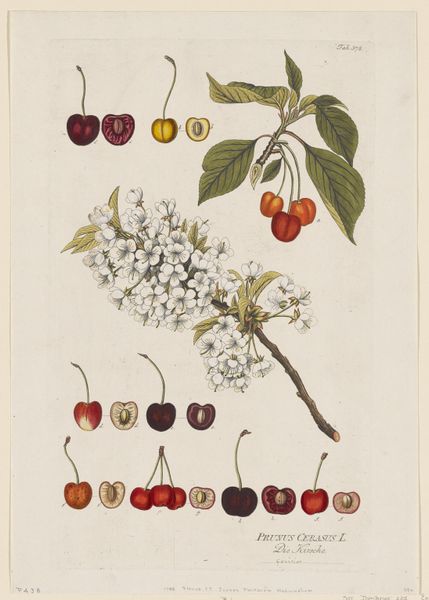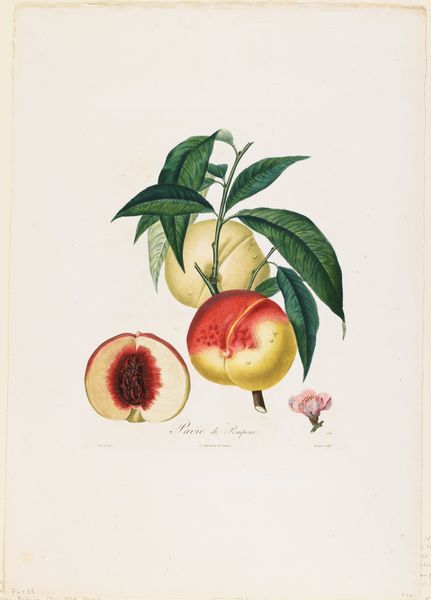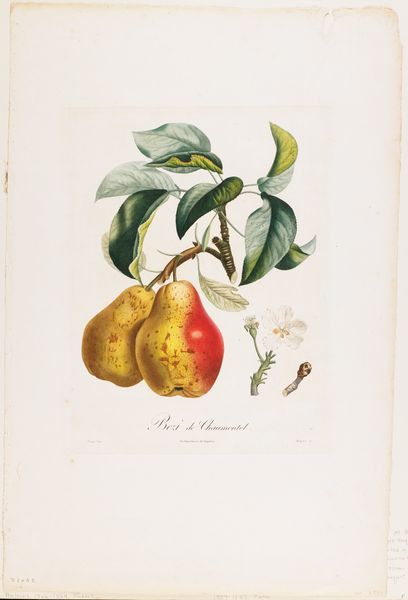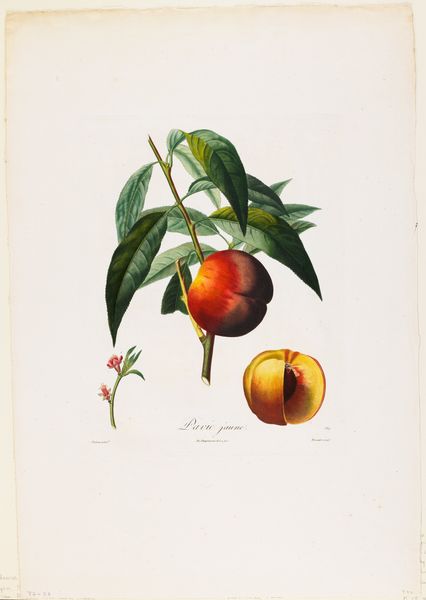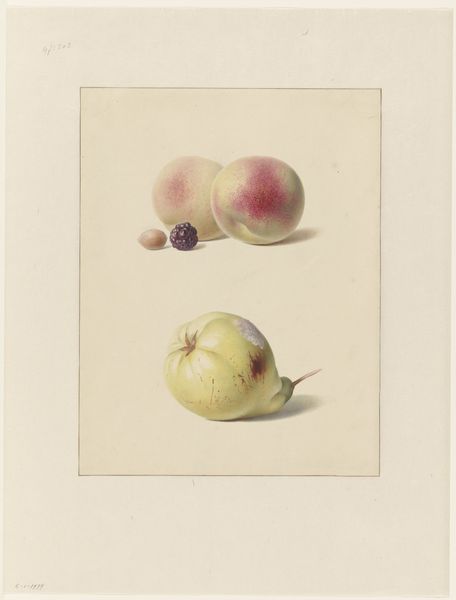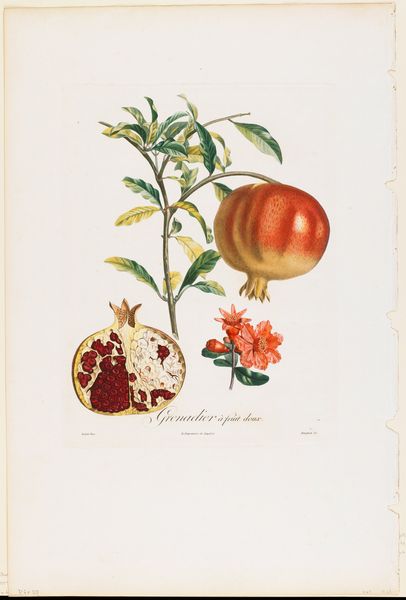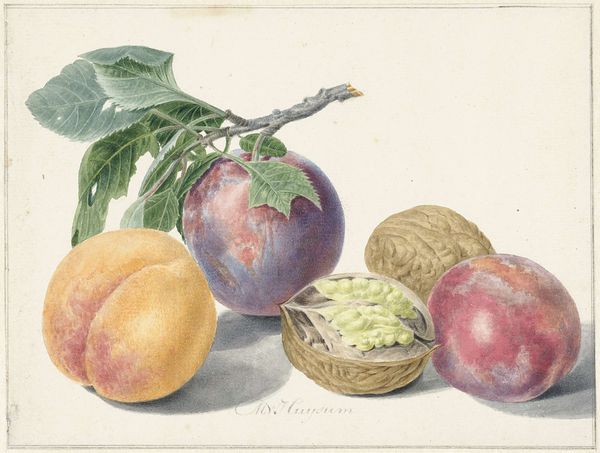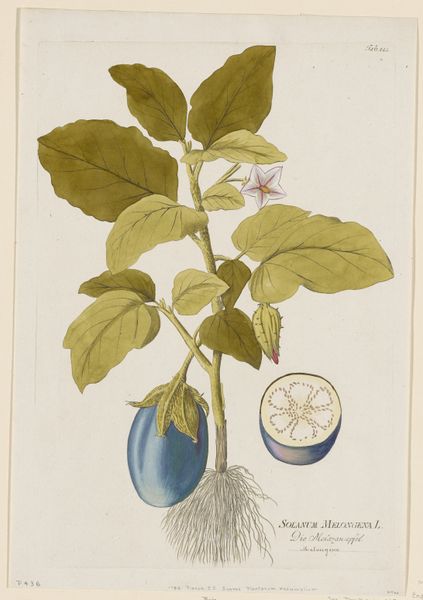
Pyrus Communis from Icones Plantarum Medicinalium 1788 - 1812
0:00
0:00
print, gouache, watercolor
# print
#
gouache
#
watercolor
#
botanical drawing
#
watercolour illustration
#
botanical art
Dimensions: 17 x 9 3/4 in. (43.18 x 24.77 cm) (plate)18 5/8 × 12 7/8 in. (47.31 × 32.7 cm) (sheet)
Copyright: Public Domain
Editor: Here we have *Pyrus Communis from Icones Plantarum Medicinalium* by Joseph Jakob Plenck, created between 1788 and 1812, currently at the Minneapolis Institute of Art. It appears to be a botanical study rendered in print, gouache, and watercolor. I am immediately drawn to the detailed precision of the piece; it seems so clinical in its observation of each pear and flower. How do you read this image? Curator: This botanical illustration intrigues me, particularly when we consider its materials and the social context in which it was produced. Think about it: watercolor, gouache, print – these are readily transportable media. What kind of networks and labour made these resources so readily available? Were there specific trade routes that facilitated Plenck's ability to execute such pieces, even remotely? Editor: That’s a side I hadn’t considered. So, are you thinking about this less as a scientific pursuit and more about its economic infrastructure? Curator: Precisely! The image speaks volumes, literally. The printing, application of the pigment, and distribution—all rely on resources, potentially exploited labor, and trade. This ‘clinical’ depiction is actually deeply embedded in socio-economic activities. Notice, also, how the image itself could become commodified, circulated amongst learned circles as evidence of a larger world, or medical and pharmaceutical professionals keen to exploit new discoveries in nature. Editor: So, the means of production behind what I saw as a quiet observation is far from neutral. It reframes the way I see these scientific illustrations; no longer just representations of nature but products of a globalized system. Curator: Exactly. Even this botanical rendering serves to solidify our awareness of how science is inevitably tied to cultural structures of production, materials, and consumption. I wonder, do we now read the image differently, aware of our relationship to consumption today? Editor: Absolutely! It reminds us that even seemingly objective depictions of nature are rooted in a complex web of materials and the labor behind them. Thank you!
Comments
No comments
Be the first to comment and join the conversation on the ultimate creative platform.

